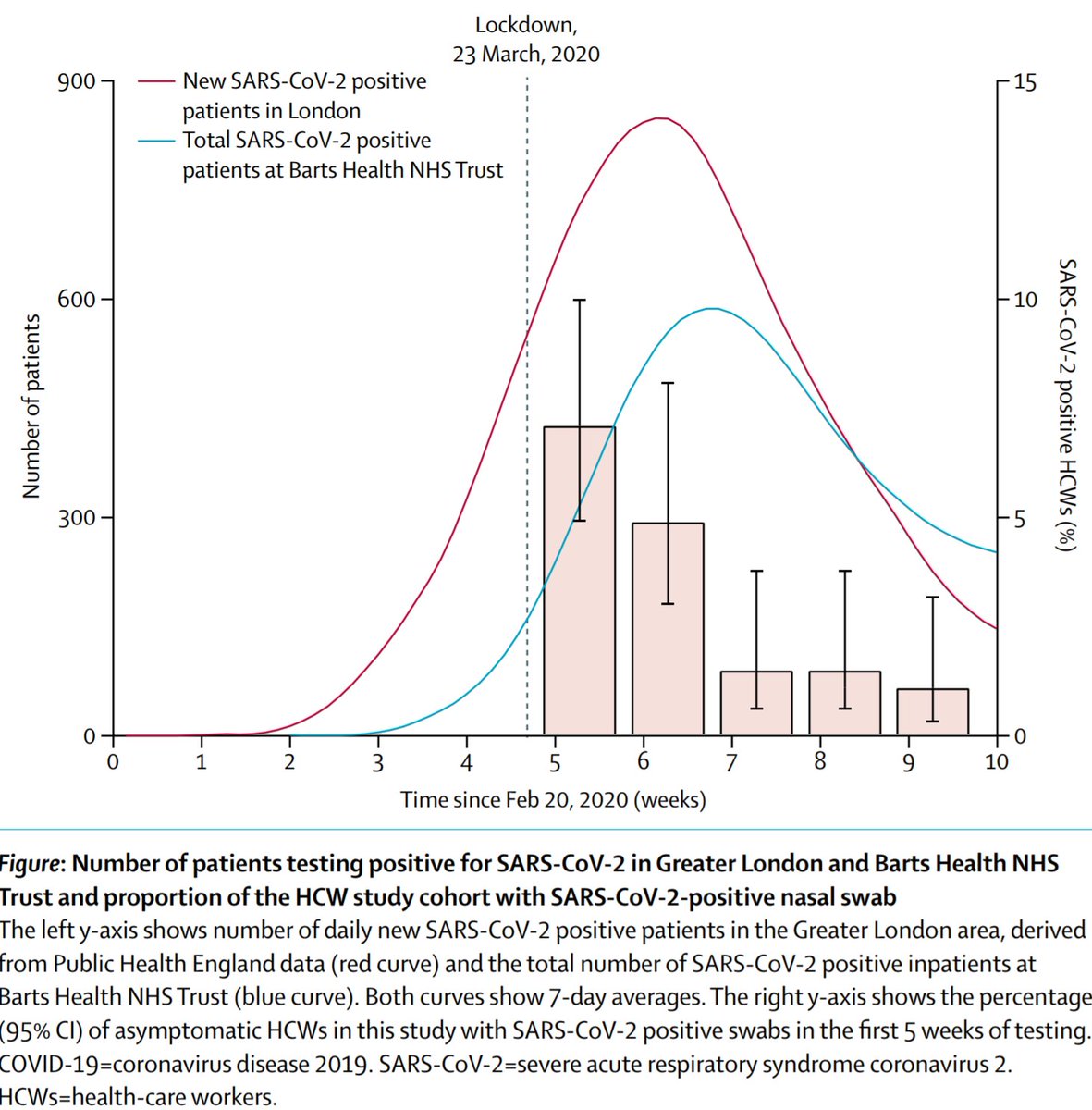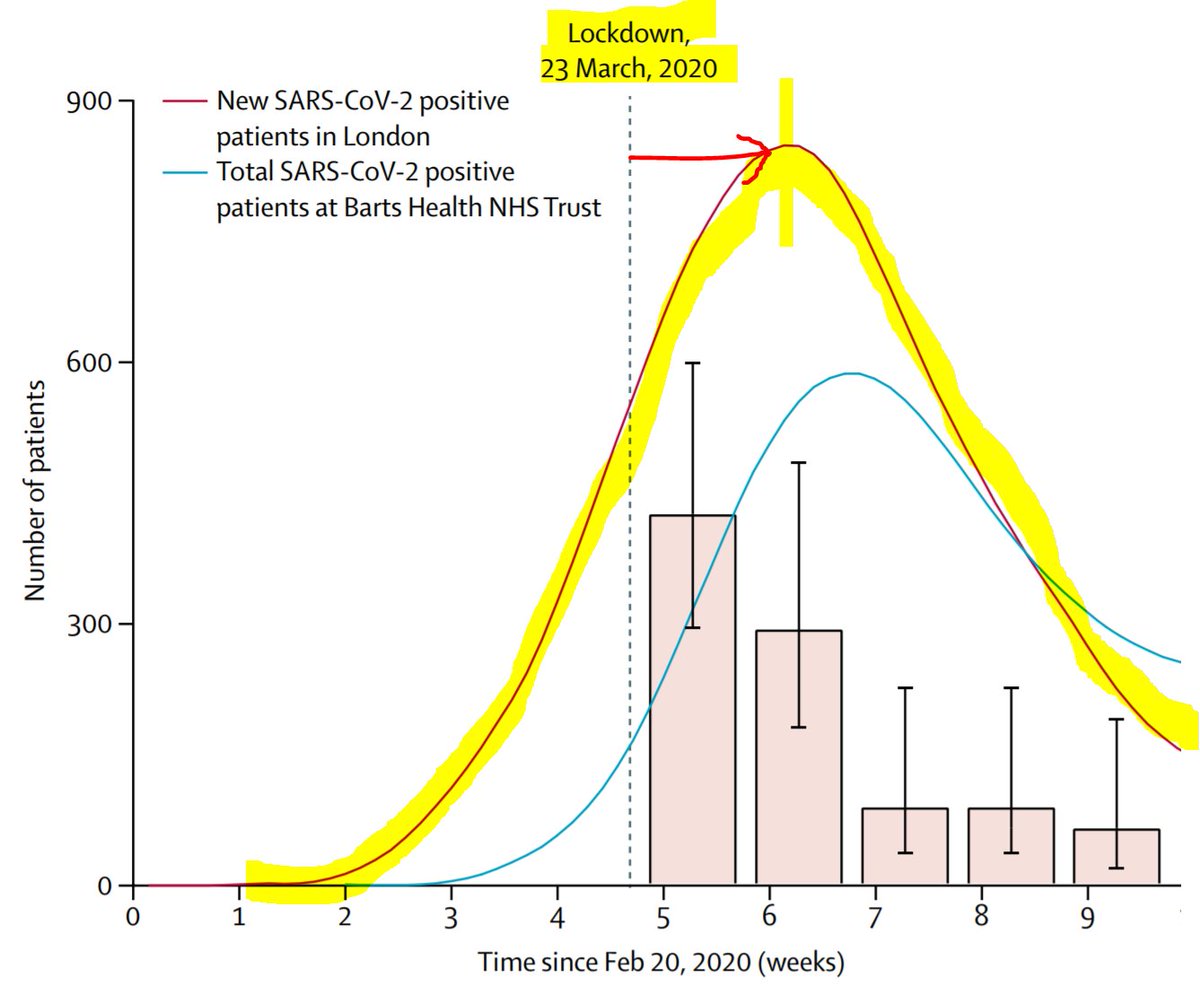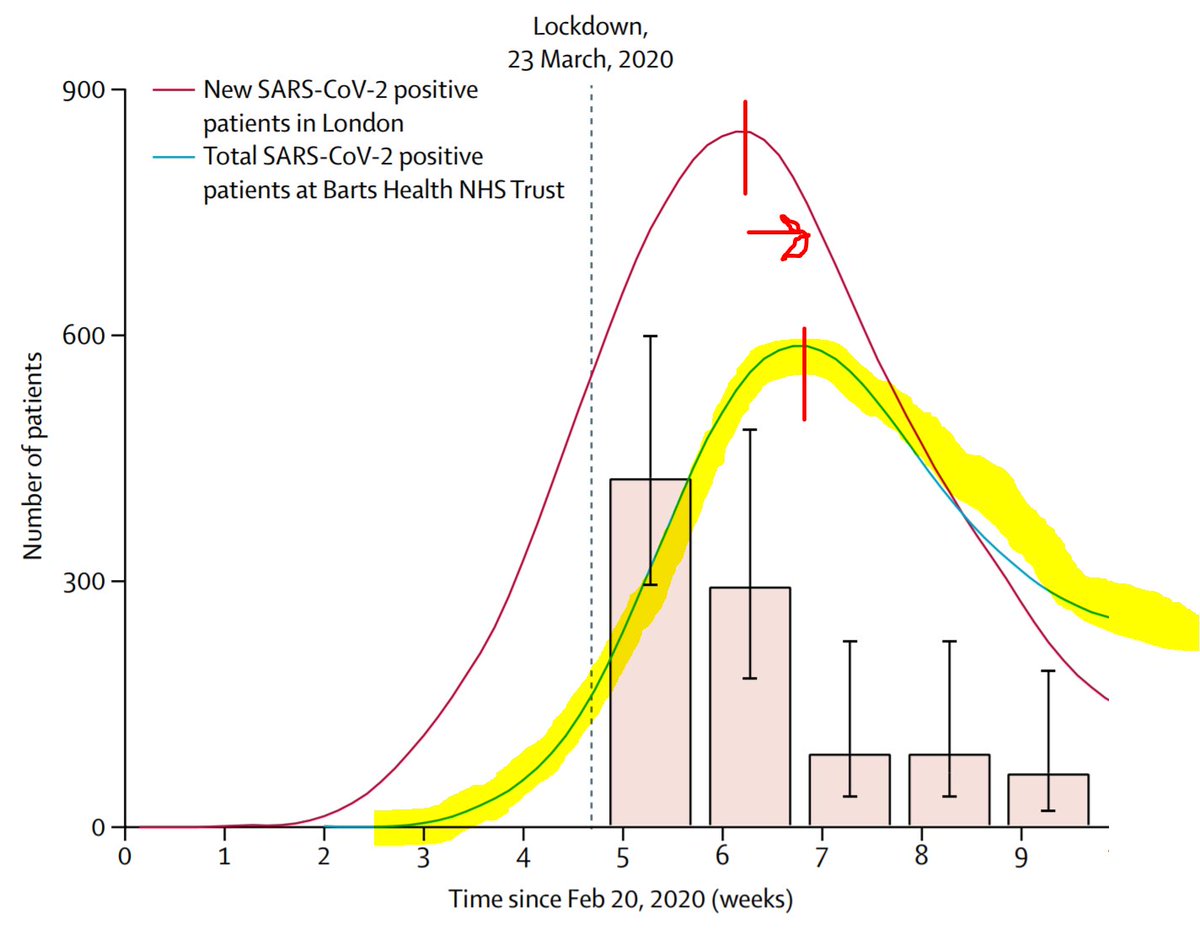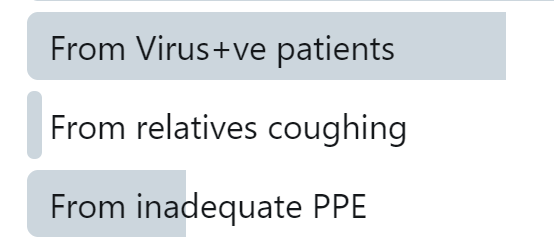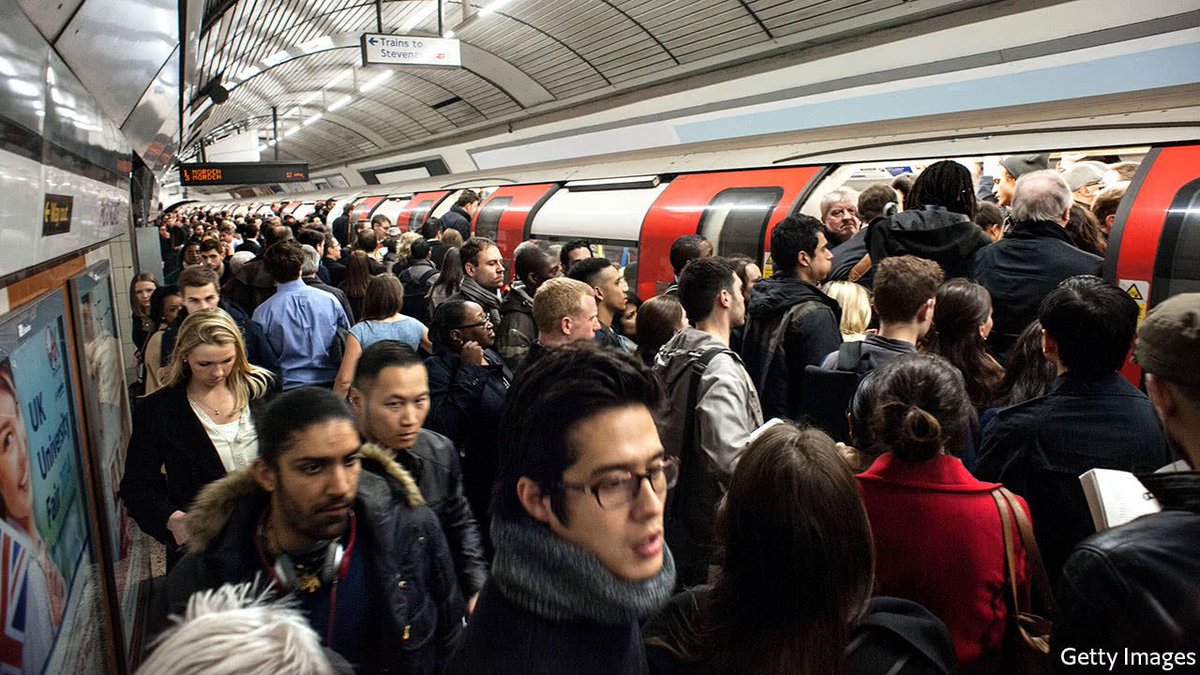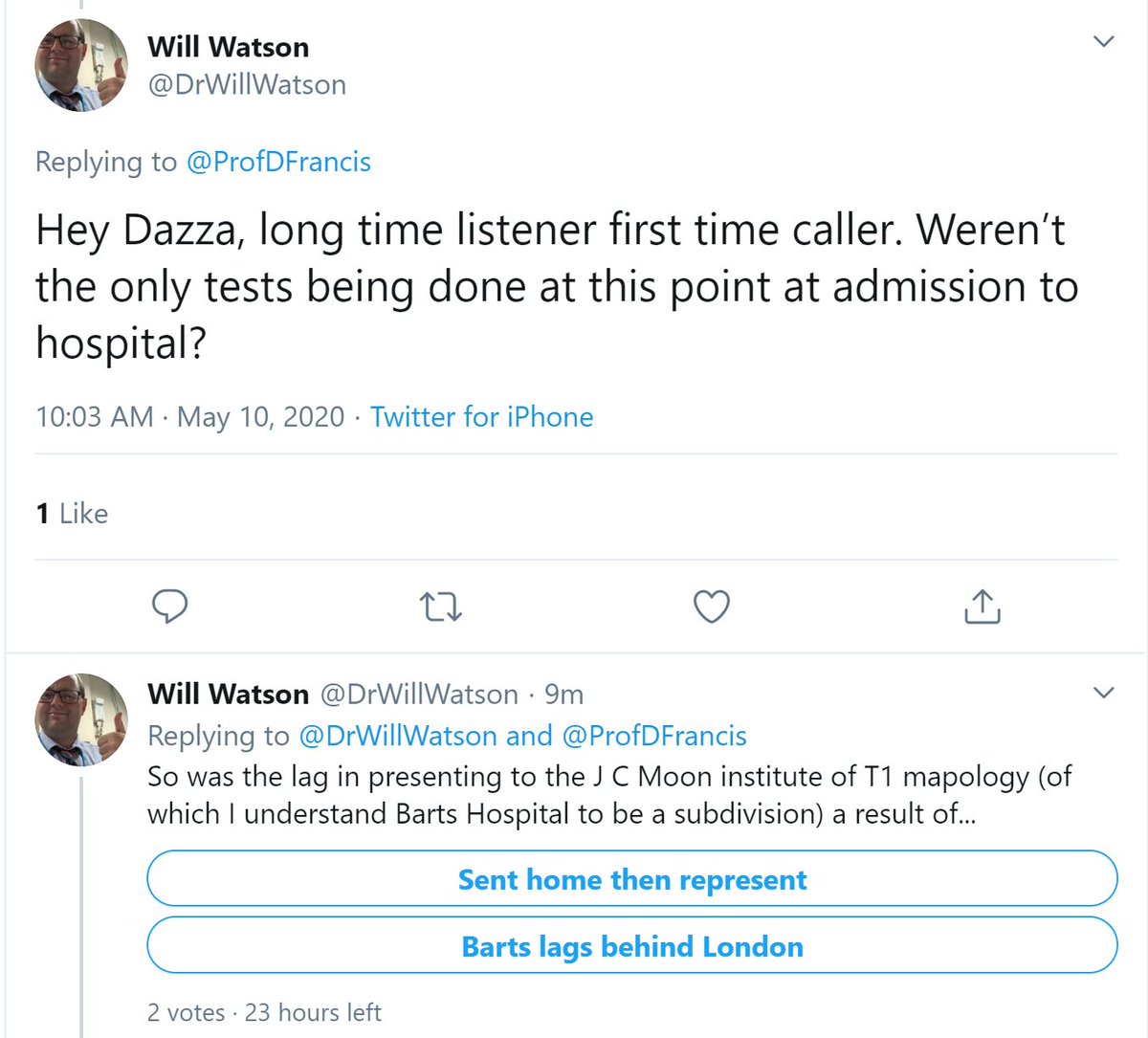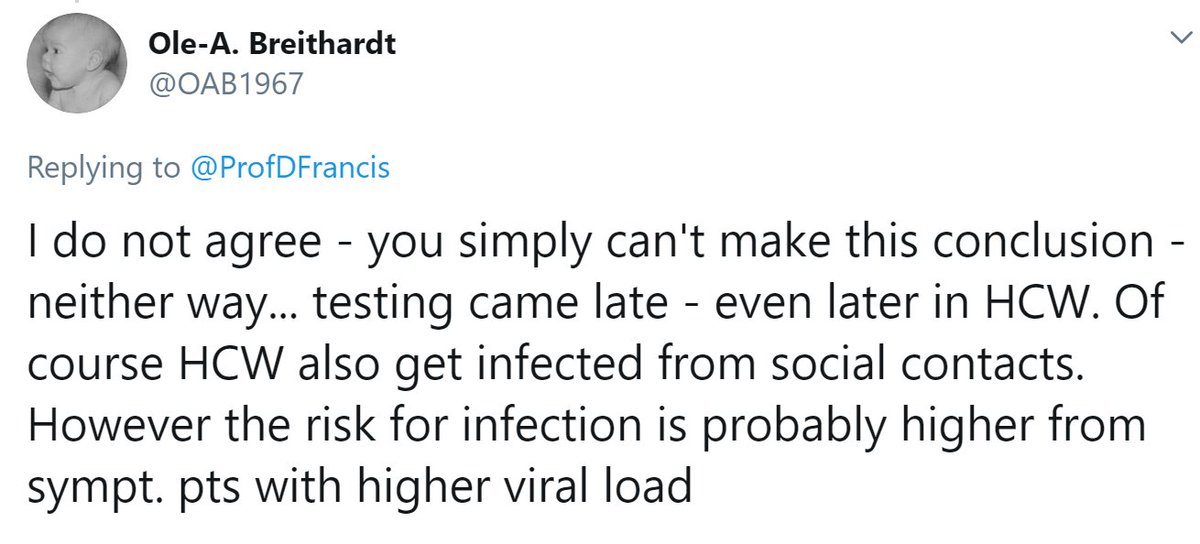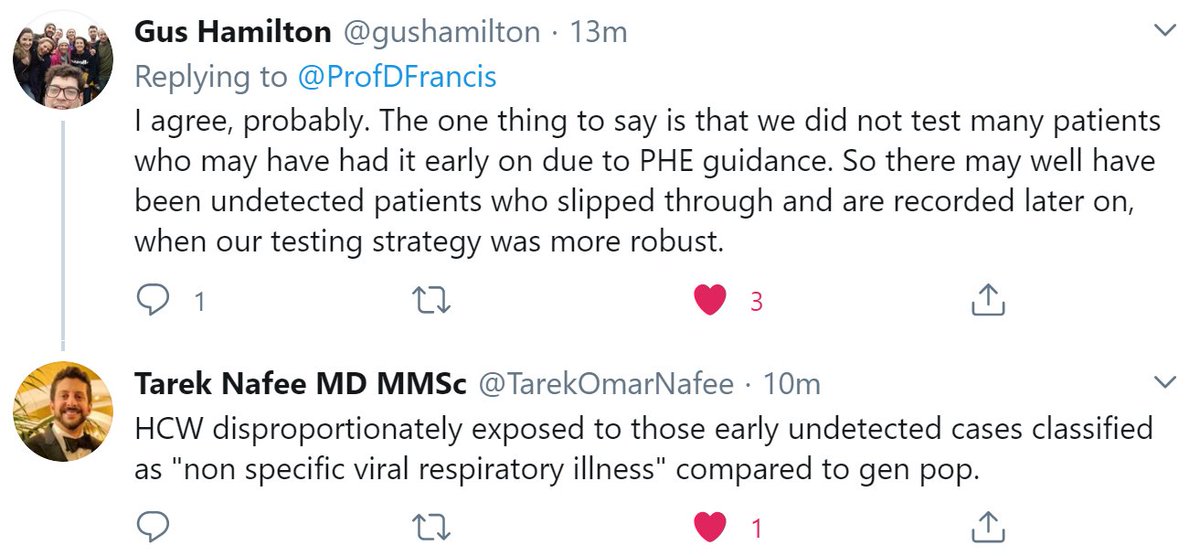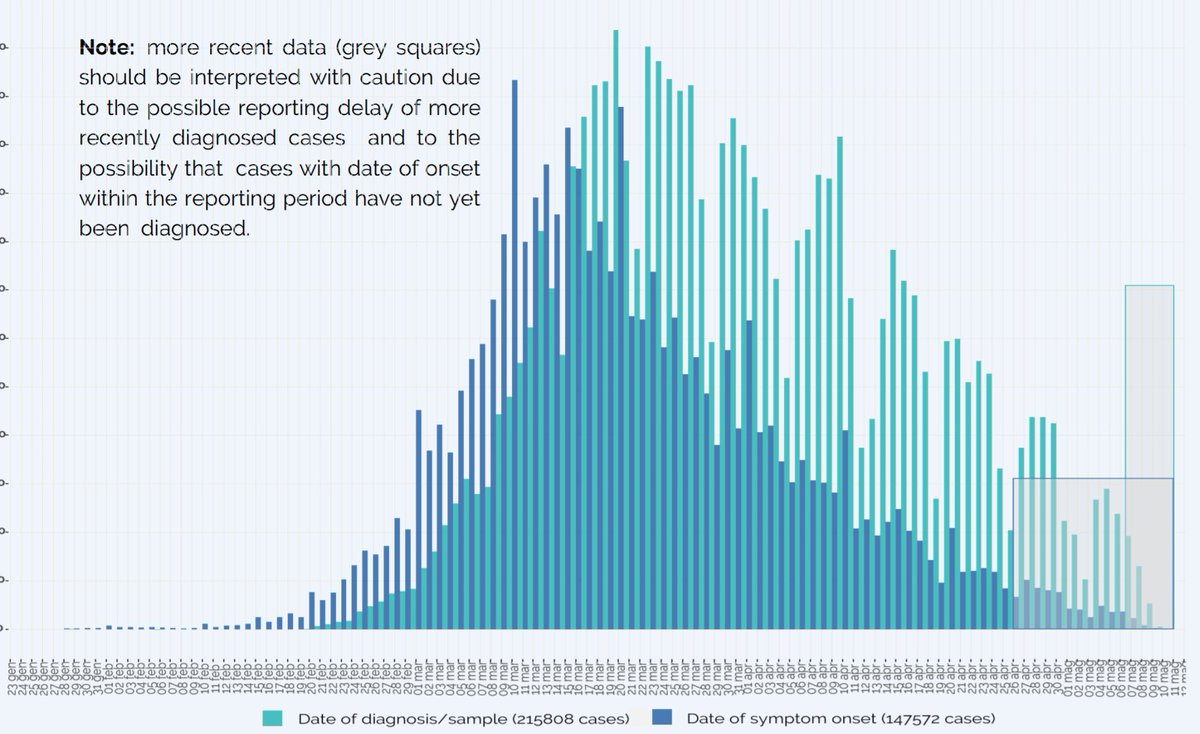Fortunately the implausibly patient Dr Charlotte Manisty (who is an ORBITA-HQ escapee to Bart's Hospital --- come back soon Charlotte!) explained it to me a few times, until I got it.
Start with this sophisticated visualisation tool, that I repurposed from a Youtube Video for children.
What happens first?
then you feel ill, and
then you get into hospital.
General population being found covid+ve?
People having to be admitted to hospital and found to be covid positive?
When would you expect their Covid swab positivity to peak?
I *do* think there will have been lots of people seen in hospital with mild symptoms, tested and sent home; of them most will have settled down, but some got worse and had to be admitted.
No Paywall (and without risking arrest and deportation to Guantanamo bay)! Thank goodness for small mercies.
thelancet.com/action/showPdf…
Please may I revise my conclusion?
To the following:
"Currently (post Lockdown), the PPE and protocols are working sufficiently well to see infection rates amongst staff fade away, rather than rise with the covid admission rates."
"The bulk of staff infections MAY have come from patients admitted early in the epidemic, when testing was not available and PPE etc not in place or partial, OR from their everyday social contact e.g. travel. We can't tell from these data."
But for those who are curious to take a scientific approach, how can we test which is more likely to be correct?
Suggestions welcome.
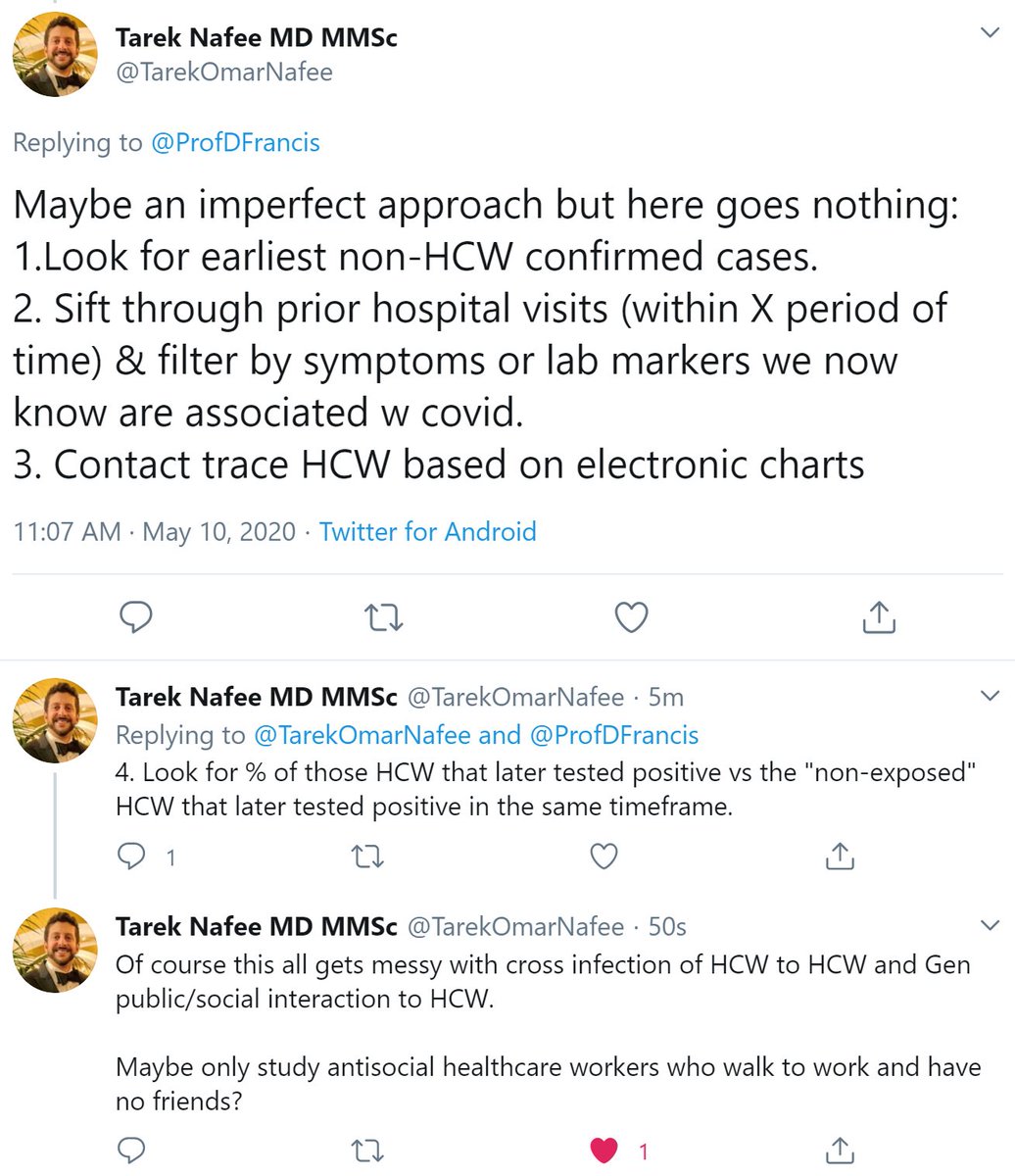
(a) a lot of work
(b) suffer from woefully incomplete identification of early Covid positive patients (presenting with unrelated symptoms, but still infectious)
(c) get messed up with subsequent interactions between people
After you con various juniors into working on this for free,
And think up a brilliant way of analysing it to avoid bias,
Stupid people will prefer to believe some confident nitwit who just blurts out opinion as analysis.
And even your fellow scientists won't be *confident* that you did everything well enough to avoid being wrong.
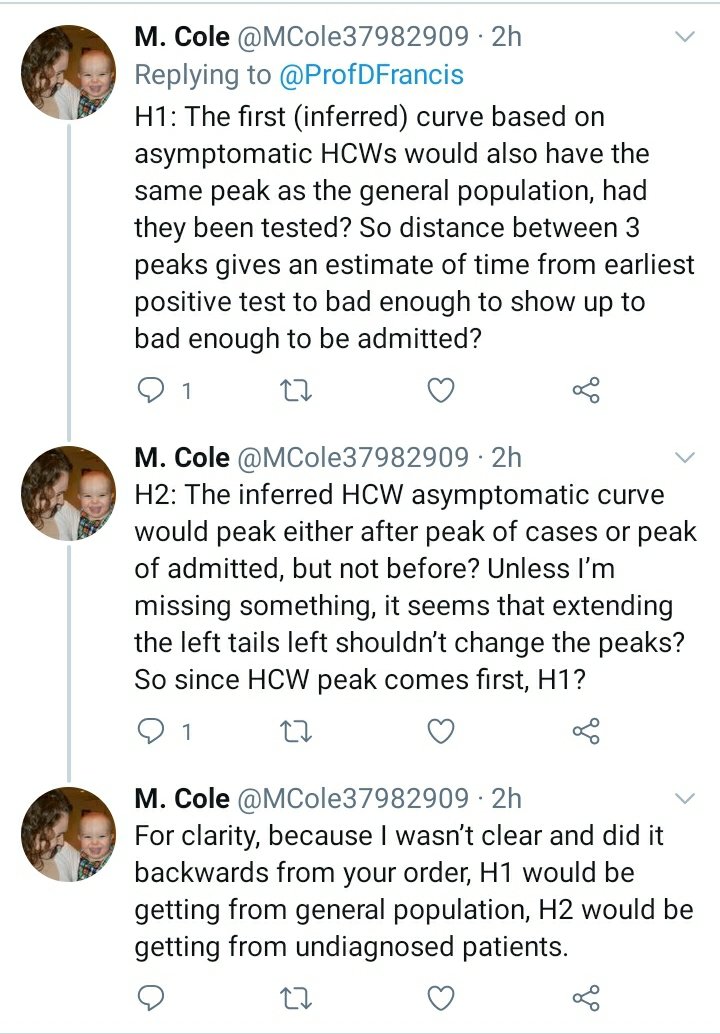
What experiment can we do that can distinguish between healthcare workers having caught it from the general population socially, versus from early patients admitted with covid (before we became generally aware of it).
If your idea meets this requirement, could you please elaborate?
By drawing in the yellow, I got a feel for the point of the graphs.
but of course we don't know when the peak of HCW virus rates was.
In contrast the cases in the community are an incidence, a New Cases count.
Perhaps the reviewer's hospital resolves people with a day? Maybe iv bleach?"
She replaces it with "We apologise to the reviewer and have added a legend key saying new and total .... Blah blah."
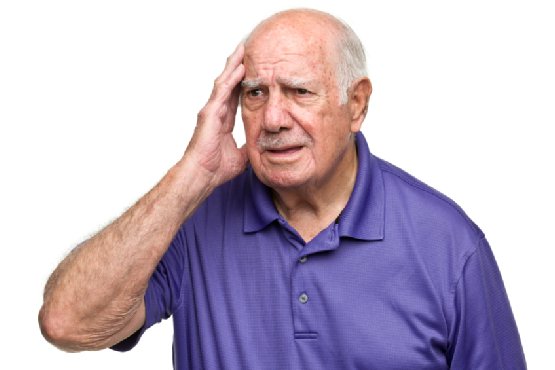
The genuine data only goes up to about 7ish percent. With my Sharpie Science (TM) extrapolation I would raise it back to the lockdown time, but then drop it as we go left. Not 45%.
Any comment @JccmoonMoon ? Have we misunderstood the graph? Should we be adding the pink fractions?
*But* I didn't say during the lockdown!
I meant before the lockdown, when people were not ... locked down.
Not everyone commutes by personal helicopter or space shuttle.
If they were caring for patients with COVID all day, they didn't know it, at the time.
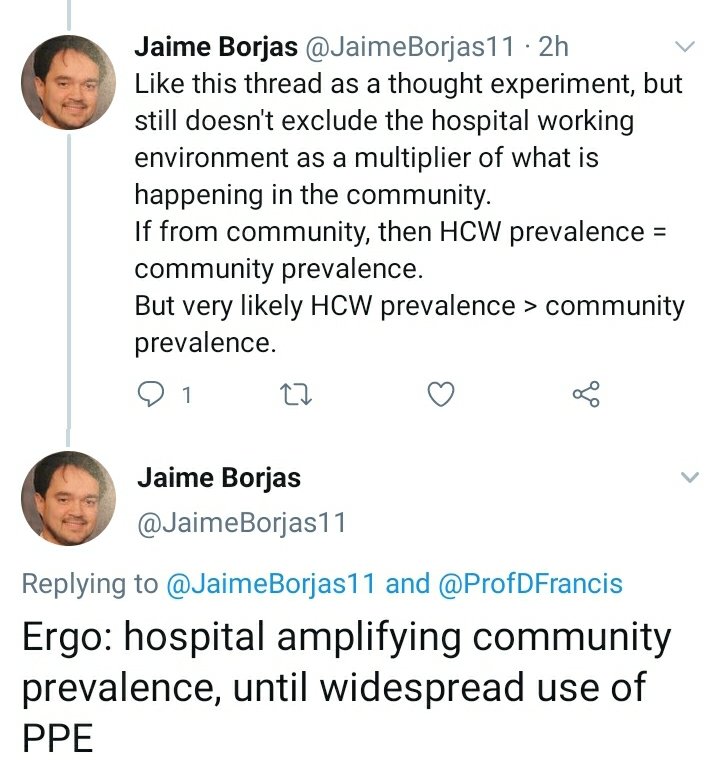
The data do not confirm or refute that. Staff got it early, either from patients or the usual way (lets call it travel, since "social contact" is misconstrued by some people as orgiastic lockdown partying)
Was the rate in asymptomatic staff higher than that of the asymptomatic general population.
But asking, is a scientifically valid contribution.
Unlike the approach of Critical Critical Care Doc, which amounts to the Fallacy of Argument from Consequences with an extra twist of Straw Man, and some Ad Hominem thrown in for fun.
In reality the participants were NOT told their results. They were staff participants in a scientific experiment of serial testing.
I hope readers see how scientists reason though.

